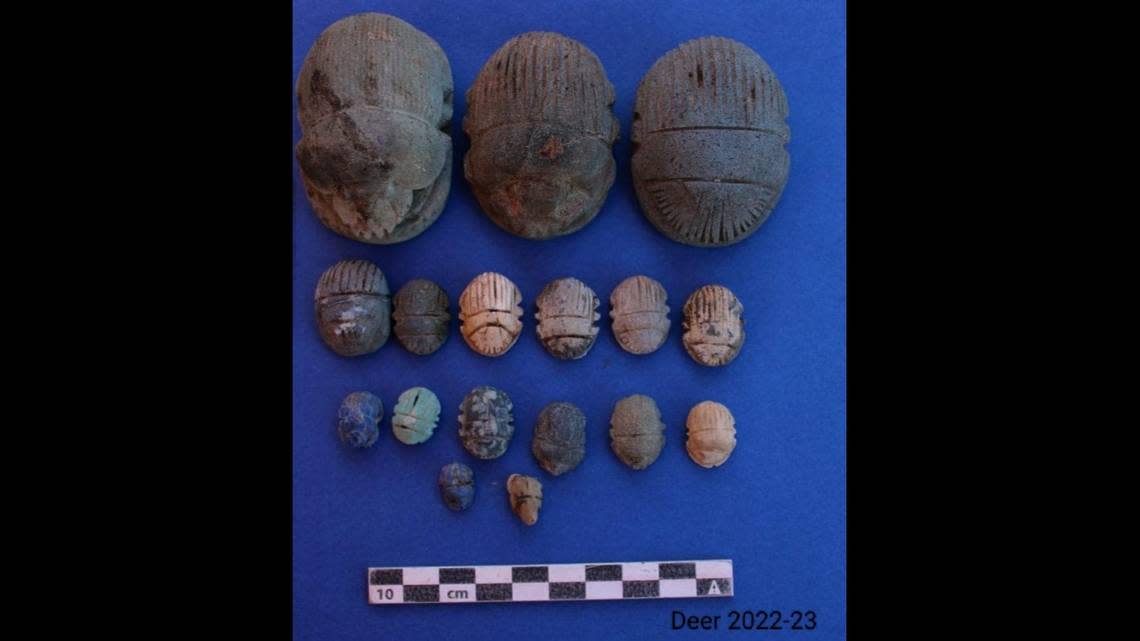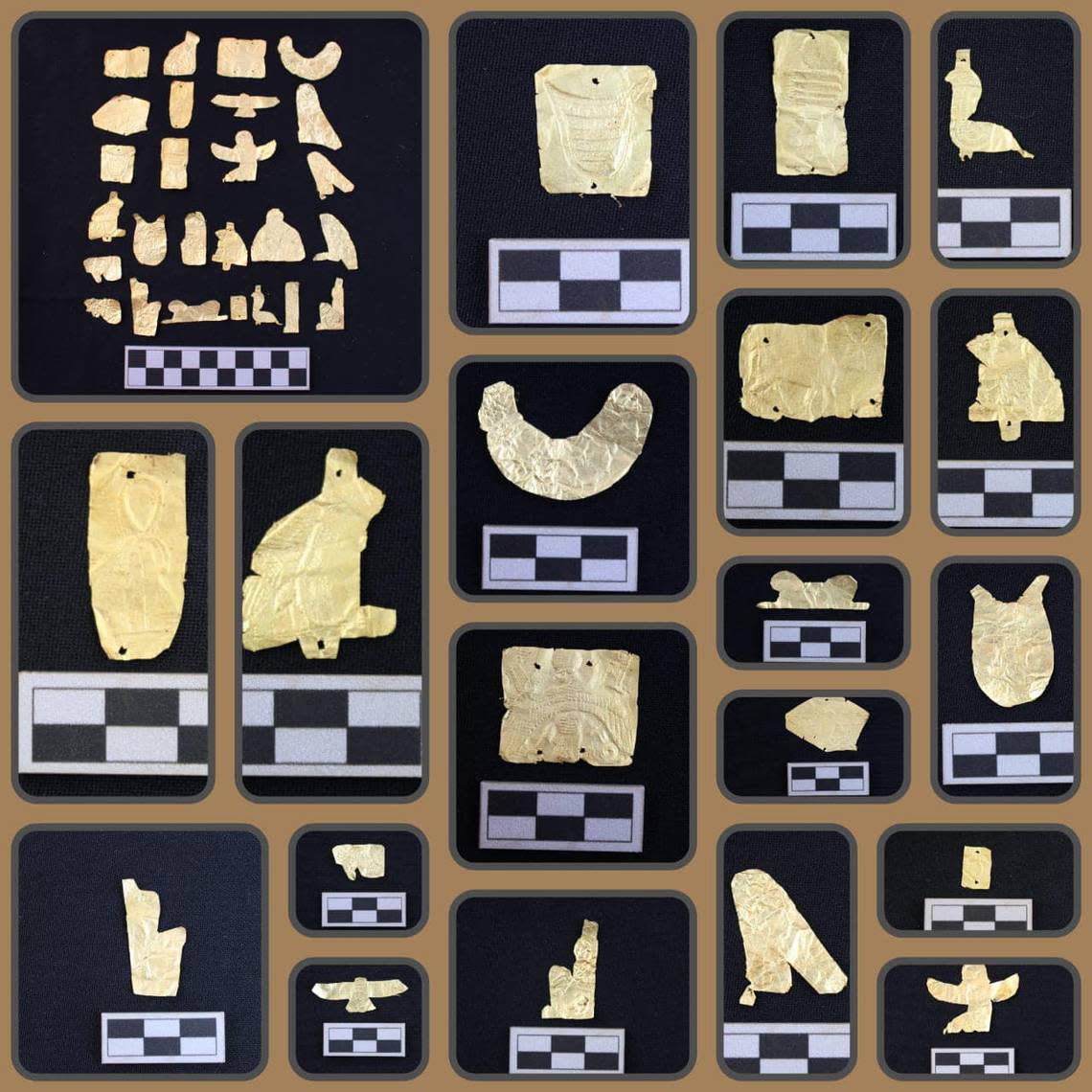Discovery of 20 ancient Egyptian tombs reveals idols and vessels for preserved organs
Twenty ancient tombs filled with a variety of artifacts, including amulets and vessels for embalmed organs, were unearthed in Egypt, government officials said.
The cemetery was found along the Nile River delta near the city of Damietta, according to a Dec. 20 news release from Egypt’s Ministry of Tourism and Antiquities. The discovery will help researchers learn more about the history of the Mediterranean city.
The tombs date to the late period, the last era of native-born ancient Egyptian rulers, which lasted from 664 to until the conquests of Alexander the Great in 332 B.C., officials said.

Photos released by the government show at least four graves alongside each other with human skeletal remains inside. Some of the tombs were more elaborate and made from brick while others were simple ditches, officials said.
A series of “amazing” metallic foils, which covered the human remains and took the shape of several Egyptian deities, were found inside the graves, officials said.
Other funerary ornaments of varying shapes and sizes were also disentombed, including a headrest and idols of Isis, the goddess of fertility and motherhood, officials said.

Miniature canopic jars, containers used to store embalmed organs, such as the intestines, were also discovered inside some of the graves, according to officials.
Archaeologists will continue excavating the site, where they expect to unearth additional remains and relics below the layers of sand, officials said. The site has previously been useful for the study of burial practices during the Greco-Roman period.
Archaeologists consistently discover ancient relics and remains throughout Egypt. The desert climate creates near-perfect conditions for the preservation of organic material, according to University College London research.
However, it was long customary to destroy archaeological findings from Roman, Coptic and Islamic cultures, according to UCL’s research.
Earlier this month, a catacomb-style building filled with ancient coffins was found south of Cairo, according to previous reporting from McClatchy News. Earlier this year, archaeologists discovered that a tomb along the banks of the Nile River was precisely aligned with the winter solstice, revealing that Egyptian architects had “extensive knowledge of the solar cycle.”
Additionally, researchers unearthed a Greek temple to Zeus on Egypt’s Sinai Peninsula in April, according to NPR.
Google Translate was used to translate the statement from the Ministry of Tourism and Antiquities.
Giant ice snails and delicate snow flowers: Take a look inside Sweden’s ice hotel
Dozens of sailors missing after Thai warship sinks during severe weather, officials say
Family dog returns to cabin without 19-year-old, spurring search in Pennsylvania woods
